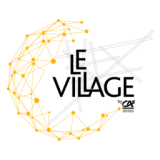The major difference I had observed between traditional approaches and Brain-Based approaches to manage and accompany Change Management processes is mainly that traditional approaches mainly consider the team, whereas neurosciences consider the team and the individuals.
It seems essential to consider the individuals, but in reality, few change management project leaders consider the Human Factor within the team. The Death Curve of Dr Kubler-Ross is widely known and presented to professionals involved in Change Management processes; however, it is not analysed for each individuals. In a change management curve, each person is at a different stage, denial, frustration, experiment or integration. Thus, the team members are not being aligned at the same stage of mind. This creates problems, frustrations and conflicts within the team, where some would be expressed, some not, and most people do not want to take risks to express their analyses, emotions or feelings. Neuroscience approaches help to consider that the individuals are searching for SECURITY, not taking the risk to be rejected by the group, or to be put in threat through change.
By considering brain-based approaches and the knowledge provided by the Neurosciences researches today, it becomes essential to get into a deeper knowledge of each individual’s thoughts, behaviours and emotions. The neuroscientist Damasio had proven there is no change without emotions.
Taking individual profile into account is of great help in Change Management. Most of the Project Managers and Human Resources people would complain about the resistances to change. This phenomenon is natural as resistance means change has been taken into account, rather than being denied.
Considering the new brain-based approach helps in better understanding the emotional state and cognitive reactions of each individual within the team, to better accompany the whole team through the change process.
To engage and involve the whole team through change, we need to consider both the individuals and the whole team profile, in terms of SAFETY® Profile to understand their main triggers, and understand how they react to change. Understanding the reasons of threats and fears will permit to better accompany change. For example, if a person main trigger is AUTONOMY, he/she will need different management style than one who needs SECURITY, as both autonomy and security are disturbed within a Change Process. The same might happen for the other SAFETY® triggers, as Esteem, Fairness and Trust. The way change is accompanied and by who are important factors to ensure the individuals’ triggers are taken into account within the team. New roles and organization bring threat: this has to be considered in a neuroscientist approach.
Besides the SAFETY® Triggers, identifying the cognitive bias will give information on how to better behave in a team to avoid blocking behaviours and conflicts, especially in terms of Team Management, collaboration and delegation aspects of the change process.
Peer coaching is a key factor to success, as well as team coaching to accompany the individuals, considering their own profile and threats to change. Making the people aware of their own triggers and cognitive bias will be necessary to make them aware of their own bias. The automatic pilot of the brain needs to be unplugged to introduce new thinking and decision processes within the brain. This can be through peer coaching, as well as self-awareness sessions. This is the reason why I have been developing mindfulness session and own-observation exercises to develop this self-awareness. The individual needs to be aware of their own way of thinking and reaction before being able to develop on new ways of collaboration within the team. Having several sessions is necessary to practice this new way of thinking, thus developing routines and natural behaviours in a new environment.
As the brain develops shortcuts to be more efficient, we need to change some cognitive biases to be able to welcome change.
Organizing Creative Workshops is another way to accompany change. It allows new perceptions to develop different angle of thoughts, in a secure and pleasant activity. Our creative workshops have always two phases: divergence phase where new perceptions and collaboration are developed within the group. Then convergence phase allows some reflections and brainstorming within the group to give a safe space and time for decision.
Workshop preparation is essential before organizing group sessions, in order to better know the individuals’ triggers. Then, we need to consider the team psychological safety to obtain adhesion and ensure collaboration within the team.
Divergent phases can be done through creative activities, and are particularly efficient when organized in a different environment, to catalyse different ways of thinking, in a secure and safe environment for the individuals, to allow free expression and reducing the cognitive biases.
In the convergent phase, the decision making process is challenged as the team members do not have the same triggers and cognitive biases. Here, the management must agree on accepting the group-thoughts, which is sometimes difficult to obtain. To get to a real consensus with the involvement of each team members needs the Management involvement, and a great knowledge of each member’s triggers.
Considering the individual cognitive differences within the team is the key for success, and will ensure enrichment of the team through their differences. The decisions taken to manage the Change Management process will then be taken in collaboration, respect and autonomy.
The Targeted Management Matrix is another tool that can be used to better each individual’s motivation and organization within the team. This approach is useful to better understand the stress factors of each member.
In fact, management of stress is important within the team, as stress factors will enhance defence cognitive behaviours. Therefore, knowing what would be those factors for each members will give information about how to manage stress and time organization within the team, to anticipate and avoid conflict situations within the team. We always need to remember that brain needs to be certain and need security. Stress is reducing the management of certainty, as it appears through uncertainty and decreases the ability to manage uncertainty.
Mindfulness practice is of great help as it develops brain routines to manage stress, and to unplug our automatic pilot in stressful situation.
In conclusion, having neuroscience knowledge to understand how the brain behaves for each individual within the team is essential to succeed in change management processes.


